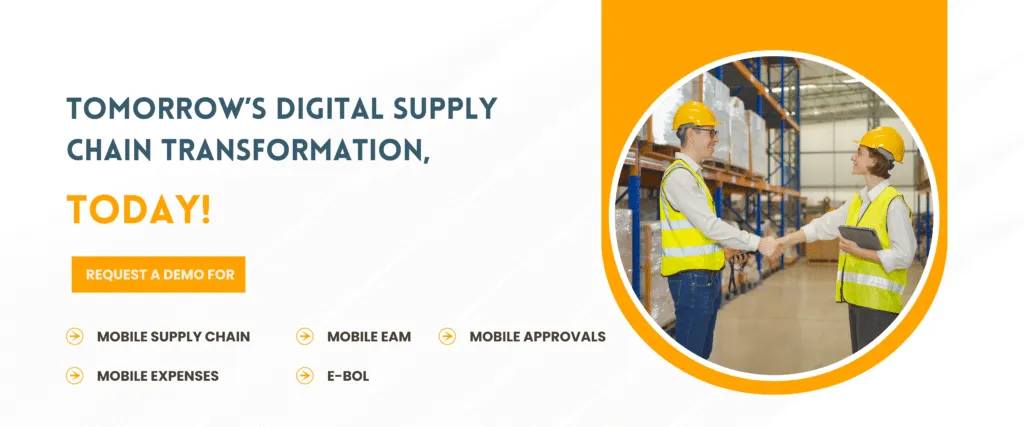
In the intricate and fast-paced world of supply chain management, efficiency and accuracy are paramount. Organizations using enterprise solutions like SAP S/4 HANA and Oracle EBS are on the constant lookout for advancements that can streamline their operations. One such advancement is in the area of RF/barcode scanning, where trends like the use of QR codes and GTIN barcodes are revolutionizing the way items are tracked, managed, and analyzed. In this blog, we will delve into how companies are leveraging these trends for enhanced supply chain performance.
QR codes have taken the world of supply chain management by storm. Their ability to hold vast amounts of data compared to traditional barcodes allows for more detailed tracking and validation at every step of the supply chain. With a single scan, supply chain professionals can access a wealth of information including origin, batch number, expiration date, and much more. This detailed data granularity is invaluable for organizations aiming to enhance traceability and accountability.
One of our customers use projects-based supply chain in their Oracle Fusion Cloud. The customer is in Telecommuncations industry and undertakes many construction projects to build towers, tunnels. These are isolated locations without the comfort of good connectivity and without the support of IT or Business. When engineers move materials, issue or return parts from projects, they need to select various fields like Purchase Order (PO), Item/Material, Enter Qty, UOM, Project number, Task number, expense category, sub inventory, locator. This was causing a huge headache as engineers were always selecting the wrong combination of projects and tasks.
Propel Apps has helped this customer print a QR code label at the time of goods receipt and use that label for miscellaneous issues, receipts, and transfers. With this innovative solution, engineers need to perform one single QR code scan and all the data is auto populated. This has reduced errors, increased the transaction speed and streamlined the supply chain operations.
Modern scanning systems are adopting a single field focus approach. This method streamlines data entry processes by enabling scanners to identify and populate the correct fields in systems like SAP S/4 HANA or Oracle EBS without the user having to select where each piece of data should go. It reduces human error and significantly speeds up the scanning process, leading to greater productivity.
Legacy systems present all the fields relevant to a particular transaction in one single page and leave it to the material handler to decide on how to capture the data. With this approach, many materials handlers find it confusing and make a lot of errors. Sometimes transactions are submitted with wrong information. Sometimes, material handlers need to restart the whole process. Though entering a few fields may look easy, imagine when people walk 400 meters to 500 meters in a big warehouse only to come back to the source location. By prompting user to interact with only one field, he or she can easily understand the next step and do not need a lot of training and on the job support.
The latest scanning technology seeks to reduce the number of scans required to complete a task. This is achieved through smart scanning solutions that can capture and process multiple data points from a single barcode. For instance, a single GTIN barcode scan can provide the item’s global trade item number, serial number, and lot number, thereby condensing three scans into one.
Sensor-based scanning is a groundbreaking trend for visionary organizations. This technology doesn’t just scan a barcode; it can identify products based on their size, shape, and even weight. Such advancements pave the way for “0 Touch” workflows, where items are automatically scanned as they pass through a sensor-equipped area, eliminating the need for manual scans and further minimizing human intervention.
The concept of “0 Touch” scanning is perhaps the epitome of innovation in the RF/barcode scanning space. Items, Work Orders, and LPNs/Handling Units are scanned and processed without any human intervention using Propel Apps' platform. This not only speeds up the process but also significantly reduces the likelihood of errors. It's a trend that’s picking up momentum, especially in high-volume environments where time and accuracy are of the essence.
Our food container customer Anchor Pac completes a work order with two scans: work order number and LPN. Propel Apps immediately performs all the validations and submits the transaction to Oracle WMS in real-time. Earlier, Anchor Pac was using Oracle MSCA and had to perform close to 20 human events: clicks, scans. Total transaction time is drastically reduced from 5 mins to 30 seconds.
GS1 barcodes and Global Trade Item Numbers (GTIN) are becoming increasingly popular in supply chain organizations. These standardized coding systems ensure that products are universally recognized and can be tracked globally. The adoption of these barcodes allows for a more seamless and integrated supply chain, from manufacturers to retailers to consumers.
Propel Apps’s healthcare customer from Saudi Arabia, RAM Clinics extensively uses GS1 barcodes, GSTIN and GTIN barcodes from the mobile supply chain application to integrate with Oracle Fusion Cloud. By leveraging the GS1 barcodes, RAM clinics can capture Item#, Lot#, Lot Expiry Date in one single scan. Furthermore, RAM Clinics was able to leverage cross reference of items. That means this healthcare customer can use Supplier provided item numbers and barcodes and speed up the operations in hospitals, clinics, and warehouses.
Visionary organizations are not just adopting these scanning trends; they are innovating beyond them. They are experimenting with augmented reality (AR) for picking processes, integrating blockchain for immutable traceability, and leveraging machine learning algorithms to predict and prevent bottlenecks. These companies understand that to stay ahead, they must constantly look for ways to integrate new technologies into their supply chain strategies.
The current trends in RF/barcode scanning are shaping an exciting future for supply chain organizations. By embracing technologies such as QR codes, single field focus, sensor-based scanning, and 0 Touch systems, companies can enjoy enhanced efficiency, accuracy, and data intelligence. Forward-thinking enterprises are already paving the way, using these tools to streamline operations and provide better service to their customers. As these technologies continue to evolve, they promise to unlock even greater potential within the supply chain, ensuring organizations can meet the demands of a dynamic global market.
As enterprises seek to adapt to the needs of the modern supply chain, Propel Apps is a revolutionary force, transforming the way supply chain operations are handled and executed. Get in touch today for a game-changing breakthrough in supply chain efficiency and agility!
